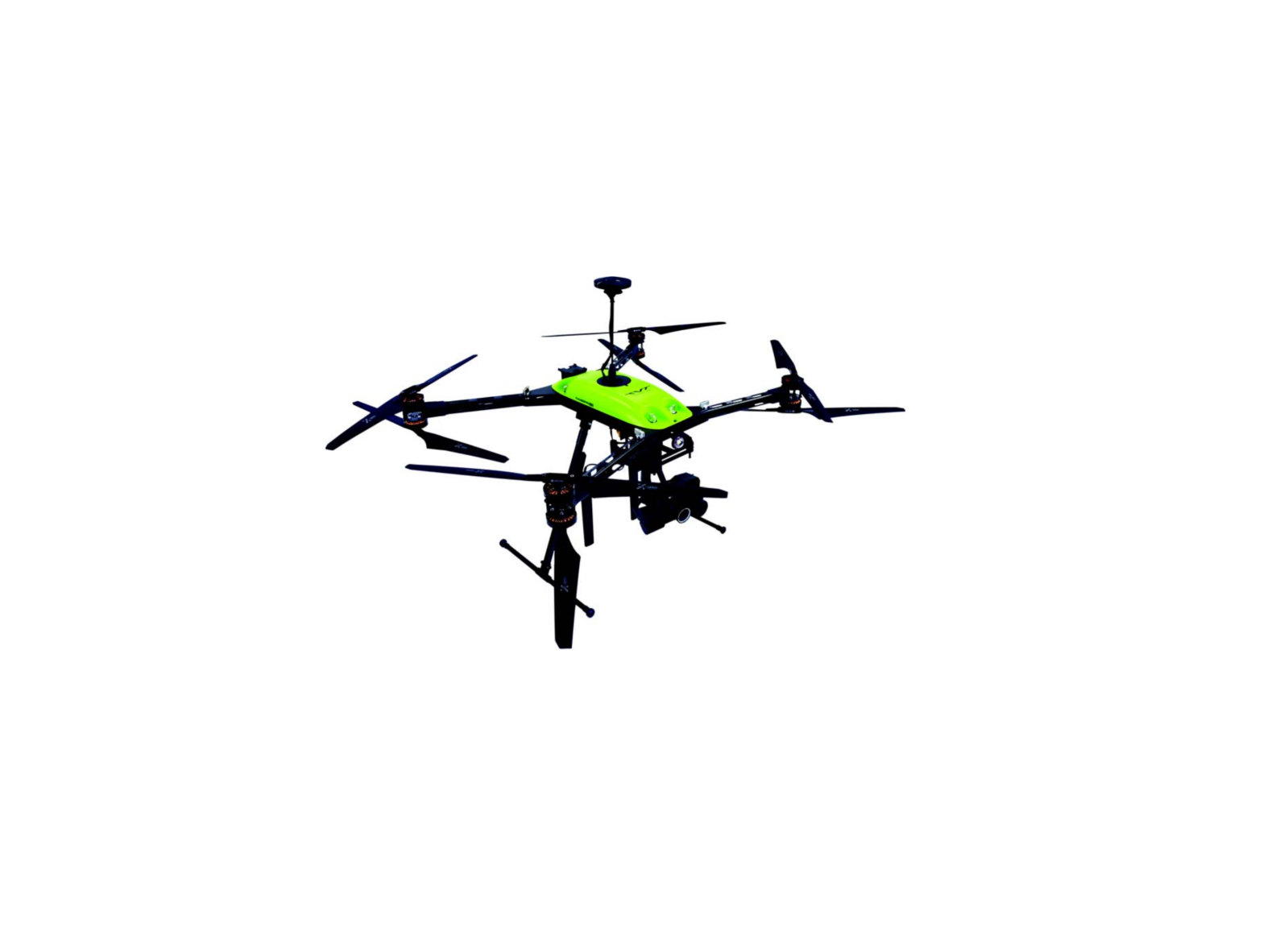TERRAVIEW RangePro X8 Drone

Introduction
Members of the RangePro X8 drone family from TerraView are sophisticated Unmanned Aerial Vehicles (UAVs). Flying drones can be fun and exciting, but it is also dangerous. Careless handling and usage poses a danger both to yourself and to others.This Safety Manual has been prepared as a general guide that applies to any TerraView model. Additional safety instructions and warnings are included in the User Manual for your particular model. These additional instructions may be specific to the charger, batteries, controller, and so forth, that shipped with your drone. Review and heed all warnings in both this Safety Manual and your User Manual
Precautions
Warnings, cautions, and notes, which have the following meanings, are used throughout this guide to help you become aware of potential problems. Warnings relate to personal injury issues, and Cautions refer to potential property damage.
Note Highlights a helpful tip to help the user work more efficiently
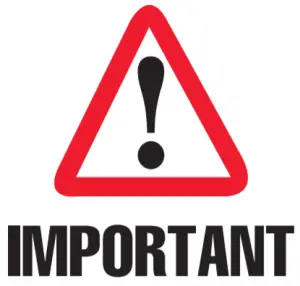 |
The alert symbol and IMPORTANT heading calls attention to important information. |
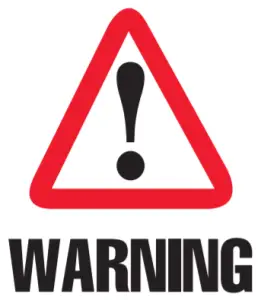      |
The alert symbol and WARNING heading indicate a potential safety hazard. Strictly follow the warning instructions to avoid personal injury. |
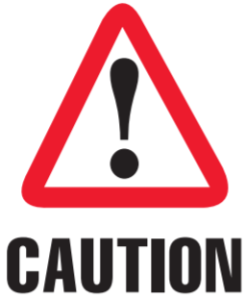        |
The shock hazard symbol and CAUTION heading indicate a potential electric shock hazard. Strictly follow the instructions to avoid property damage caused by electric shock. |
        |
The alert symbol and CAUTION heading indicate a potential hazard. Strictly follow the instructions to avoid property damage. |
Conventions/Terminology
Payload: Any attachment connected to the RangePro X8.RTH/RTL: Return to Home/Return to LaunchTransmitter: The controller that the pilot holds while flying the RangePro X8UAV: Unmanned Aerial Vehicle (AKA a drone)
Reference Documents
Where applicable, your User Manual references other documents that provide safety regulations, detailed notes on how to operate specific pieces of equipment included with the RangeProX8, and other information, that will ensure your flight operations are safe and your RangePro X8 is well maintained.Prior to flight operations, be sure to familiarize yourself with both your User Manual and all the information in the reference documents. Electronic copies of these documents may be found on the www.terraview.com support page.
Registration
In the US, current FAA regulations require registration of all drones that weigh in excess of 9 ounces (250 grams). The RangePro X8 with a battery and no payload weighs approximately 10 pounds (4.4 kilograms) and is therefore subject to registration requirements. To register your drone, visit the FAA website at https://faadronezone.faa.gov.
      |
If you are a commercial operator of the RangePro X8 in the US, review the FAA Part 107 requirements and comply with all local and federal regulations.If you are an operator outside of the US, contact your local authorities to ensure compliance with local laws and regulations. |
Label Your Drone According to FAA Regulations
Comply with the current regulation for labeling your drone. In the US, refer to https://faadronezone.faa.gov
Cautions and Warnings
Every member of the RangePro X8 family of drones is a sophisticated UAV. Drone operation can be dangerous. This section covers various cautions and warnings that apply both to various parts of the aircraft, and to the environment (which includes other people) around your fly zone.
      |
To avoid the risk of personal injury, DO NOT fly the RangePro X8 above or near large crowds. |
Motors and Propellers
The motors and rotating propellers of the aircraft can cause serious injury to yourself and others. Obey the following cautions and warnings for your safety and the safety of others:
      |
To avoid the risk of personal injury, be aware of the sharp edges of the propellers during pre-flight setup or when replacing the propellers. Wear gloves or take other protective measures when touching the propellers. Stay away from rotating propellers and motors. Keep foreign objects away from rotating motors and propellers. Burn risk: Motors may be hot after a flight. Do not touch or handle the motors until they have cooled down after a flight. |
        |
To avoid damaging the RangePro X8:
|
The Aircraft
        |
To avoid damaging the RangePro X8:
|
During a Flight
      |
To avoid the risk of personal injury and/or property damage, land immediately if severe drifting occurs (i.e. if the aircraft does NOT fly in straight lines) or if the aircraft does not properly respond to flight commands. |
        |
Comply with local regulations for piloting a small UAV. To avoid damaging the RangePro X8, before using the UAV, consult a weather service for local weather conditions. Avoid flying the drone if:
|
      |
In the event of a crash, approach the aircraft slowly and cautiously; inspect your RangePro X8 for damage, including small cracks in the propellers, the arms, landing gear, gimbal, and especially the battery. If there is any damage to the RangePro X8, do not fly the drone until it has been repaired. |
Other Flight Guidelines
- Maintain a line of sight to your aircraft at all times.
- Fly in open areas. Tall buildings or steel structures may block the GPS signal or affect the accuracy of the aircraft’s compass.
- Pay attention to Low Battery warnings and land the aircraft promptly and safely.
- If flying in return-to-home mode, you can adjust the altitude of the aircraft to avoid obstacles.
- Land immediately when severe drifting occurs in flight, i.e., the aircraft DOES NOT fly in a straight line.
- DO NOT answer incoming calls during flight.
- DO NOT fly under the influence of alcohols or drugs.
- REMEMBER: It is solely your responsibility to comply with all flight regulations.
Environmental/Operational Concerns
- Know and observe local laws and regulations.
- Make sure you have been sufficiently trained.
- Do not use the aircraft in severe weather conditions. These include high winds, thunderstorms, rain, snow and so forth.
- Do not use the aircraft near accidents, fire, or near locations where natural disasters like storm damage or tornadoes have occurred. These places may have emergency and rescue personnel present who are not normally in the area.
- Do not drop, launch, or otherwise project any dangerous payloads on or at any buildings, persons or animals.
- Respect the privacy of others when using a camera as your payload. Make sure you comply with local privacy laws, regulations, and moral standards.
- Do not trespass into the private property of others or other restricted zones.
- Do not operate in the vicinity of manned aircraft, regardless of altitude.
- Do not fly the aircraft in densely populated areas, including cities, sporting events, exhibitions, performances, etc.
- Do not fly the aircraft near or inside No Fly Zones specified by local laws and regulations.
- Do not fly the aircraft indoors. The RangePro X8 was designed for outdoor flight with GPS lock.
Shipping Lithium Polymer Batteries
      |
Federal regulations prohibit the shipping of large Lithium based batteries with other equipment. Regulations may change, so regardless of whether you are shipping by air or by ground, be sure to check with your carrier before packing and labeling batteries for shipmen |
Lithium polymer batteries are flammable and are thus governed by specific regulations. The battery for your RangePro X8 was shipped separately. Be sure to save the shipping material that comes with the battery, because the materials can be reused for future shipments. See Appendix A, “Shipping Lithium Polymer Batteries” on page 17 or the TerraView Lithium Battery Shipping Notice for additional details.
Emergency Procedures
Propeller Loss
Do the following:
- If you suspect that you have lost a propeller, slowly and carefully fly the aircraft to a reasonable landing area and land immediately.
- You may also use the automated RTH/RTL function, but keep an eye on the aircraft and make sure it is heading in the correct direction to come back home. If the aircraft starts to deviate from the RTH/RTL flight path, initiate the automated RTH/RTL sequence again. Repeat this step until the aircraft comes home and lands.
- If the unit is not able to return to home, manually land in the nearest unpopulated area.
- If the aircraft loses a propeller and is flying out of control toward a populated area, initiating an emergency “prop stop” until the props stop would be the safer recourse. Refer to your model’s user manual for instructions for stopping the propellers in flight.
Loss of Power
Do the following:
- If power loss occurs, the aircraft will drop from the sky and fall to the ground.
- Verbally warn others in the operation area immediately.
- After the aircraft has hit the ground, approach the crash site cautiously.
- Look for debris as there may be sharp jagged pieces lying about. Also be cautious in case a damaged battery erupts into a fire.
Loss of GPS
Do the following:
- If the GPS signal degrades until it is not working properly, or fails completely, you can still fly the aircraft in manual mode.
- Bring the aircraft back to the landing area if you are able and land immediately.
- If you cannot return to your landing area, then land immediately in the area of GPS loss if the area is suitable and safe for landing
Loss of Command and Control Link
Do the following:
- If you lose your data link/command and control functionality of the aircraft, then after several seconds the aircraft will switch to fail-safe RTH/RTL. This will bring the aircraft back to the takeoff location and automatically land.
- Ensure the landing area is clear and continue to monitor the aircraft and the surroundings for any dangerous situations that may arise
Loss of Telemetry Data Link
Do the following:
- If you lose your video and telemetry data link, yet still have control of the aircraft through the ground station controls, it is possible to continue to fly the aircraft.
- In some cases a loss of this link will cause the client application to lock up. If this happens it is possible to close the application and reopen it to reestablish the link. However, exercise caution when doing so and ensure that the pilot remains in full control of the aircraft at all times.
- If the telemetry link cannot be reestablished immediately return the aircraft to a safe location and land it. Without a telemetry link an operator is not able to monitor power status or receive critical in-flight warnings being issued by the aircraft.
Loss of Video Link
Do the following:
- With a loss of video link you will still have command and control of the aircraft.
- You may have flown too far away or have run into signal interference.
- Try flying back toward your location to pick up signal again.
- You may also try adjusting the antennas so that they are facing the aircraft. If this doesn’t work, bring the aircraft back and land immediately using your instruments or by initiating the RTH/RTL function.
Fly Away
If the aircraft doesn’t respond to any pilot inputs and is flying without pilot commands, you may have a fly away situation. Do the following:
- If this occurs note the battery voltage, speed and direction of flight. Based on these factors determine where the aircraft will most likely end up.
- Notify local authorities of the incident.
- If flight area permits you may want to try and initiate the “aero-termination” command.
Pre-Flight
Do the following:
- Place the RangePro X8 in a clear area absent of debris with direct access to satellites to obtain GPS lock.
- Unfold propellers so they are fully extended and perpendicular with props below and repeat for each arm (see figure 1).
- Verify that the UAV arms are positioned properly by performing a quick check of the propeller tips. Make sure there is about 1.5 inches (3.8 cm) between front and rear arms’ propeller tips, and 3.5 inches (8.9 cm) between left and right arms’ tips as shown in figure 1.


        |
To avoid damaging the RangePro X8, verify that there is sufficient clear space (no loose debris on the ground) around the UAV (TerraView recommends a 30-foot or 9 meter radius around the aircraft, as shown in figure 2 on page 13) for takeoff and landing. |
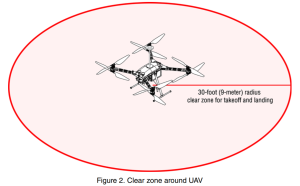

Takeoff
Do the following:
- Make sure the RangePro X8 is in a good takeoff location (free of debris and a safe distance from objects and structures like buildings and trees. TerraView recommends a 30-foot or 9-meter radius around the aircraft) for takeoff and landing (see figure 2). Remember that this area will probably be the return-to-home/ return-to-launch (RTH/RTL) and landing location.
- We also recommend using a flat and level surface for takeoffs and landings. Use of a takeoff mat may be needed for dusty sites.
- Be aware of possible strong magnetic interference when choosing your takeoff location. Vehicles, buildings, dumpsters, street lights and even the rebar in the concrete you are standing on may cause issues. (Remember, this area will be the RTH/RTL location as well.)
- Clear the area of personnel and notify participants of your intention to take off.
Post-flight—Inspecting and Storing the Battery
Before and after every flight:
- Check each cell and the battery frame for dents, punctures, or cell puffing.
- Check connector pins to ensure pins are secure and there are no burn marks.
        |
DO NOT use a battery that shows signs of damage. This includes damage to the cells, wires, and connectors associated with the battery. |
When storing batteries for several weeks at a time (or longer) charge batteries to their storage level. Always store your batteries in a dry and temperate storage area. Remove the payload. The method of doing this will depend on the payload you are using.
Other Warnings for Batteries and Chargers
The following are general guidelines for the usage of battery chargers with your rechargeable battery. Follow the safety guidelines found in the documentation of the specific charger model that you are using. You can also find information at www.terraview.com/support/.Never leave the charger unattended when it is connected to a power supply. If a charger begins to malfunction, disconnect it and power it off at once and refer to its operation manual.Keep the charger well away from dust, water, heat, direct sunshine and vibration.Chargers, and the batteries being charged, should be put on a heat resistant, non-inflammable and non-conductive surface. Never place them on cloth seats, carpet or similar materials. Keep all inflammable, volatile materials away from the operating area.Never attempt to charge or discharge the following types of batteries:
- A battery pack which consists of different types of cells and/or from different manufacturers.
- A battery that is already fully charged or just slightly discharged.
- Non-rechargeable batteries (this is an explosion hazard).
- Batteries that require a different charge technique from LiPo batteries.
- Damaged or faulty batteries.
Maintenance
Maintenance consists of user maintenance activities, and propeller replacement.All other activities require factory maintenance from TerraView or an Authorized TerraView Service Center.These include activities such as arm replacement, correcting unexpected flight characteristics, motor or bearing replacement, power issues, and connectivity issues.
Note Additional spare components can be purchased by contacting us at https://terraview.com/contact/.
User Maintenance Activities
The following should be performed by the user before and after every flight:
- Keep it clean: The proper way to clean your RangePro X8 is to use a damp cloth to wipe down the cover and remove any debris from the visible carbon fiber components. Do NOT remove any components for cleaning.Store in a temperate and dry place. You can also use a can of compressed air to ensure there is no debris in the motors.
- Inspect for damage to propellers, loose screws, and other unusual indications.
- Replace damaged propellers.
- Replace broken landing gear.
- Tighten loose propeller mounts.
- Tighten loose propeller screws (use LOCTITE® 243 blue threadlocker or equivalent).
- Before every flight, rotate the motors while listening for noticeable noise. If you hear noise, the motors may need servicing. Do not fly if there is noticeable noise in a motor.Replace motors every 800 to 1000 hours or as needed. If a motor is making noise, contact us at https://terraview.com/contact/.
Replacing a Pair of Propellers
Replacing damaged propellers is a very important safety procedure. Consult your model’s user manual for instructions on how to replace the propellers on your aircraft.
  |
Each pair of propellers is balanced, so if one is damaged, both propellers in the pair must be replaced. |
Contacting TerraView for Support
Support Options
In addition to standard warranty support, TerraView offers training, integration, and customization services, maintenance, repair, and extended warranty options. Contact your distributor or sales representative for more information.
For technical support or questions about safety-related issues, contact the TerraView Flight Support line at 1-800-628-3119 or e-mail [email protected].
Shipping Lithium Polymer Batteries
The TerraView RangePro X8 series of batteries, RP6S24KHDx are considered Class 9 Hazardous Material and must be shipped accordingly per UN3480. These are very strict regulations regarding shipment of batteries containing lithium.
      |
Keep the shipping material that shipped with the batteries! |
Basic Shipping Requirements
      |
If you are not properly trained and certified as a hazardous material shipper, consult a local shipping agency such as FedEx or UPS. |
When shipping these batteries for return to TerraView or a third party, the following basic requirements must be met:
- 1The shipping box must meet the U3480 regulation. The packaging in which the batteries shipped is appropriate and approved.
- For Class 9 Hazardous Materials under UN3480, the label shown in figure 3 on page 18 must be present on the shipping container.

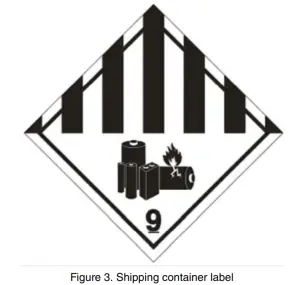
- The capacity of these batteries does not allow for shipping on passenger aircraft. The label shown in figure 4 must also be present on the shipping container when shipping via air. When shipping via ground, this label is not required.

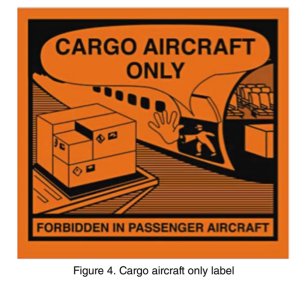
- Finally, UN3480 covers shipping lithium batteries shipped by themselves. To indicate this on the packaging, the label shown in figure 5 is also required. The shipper’s phone number should be included on the label.

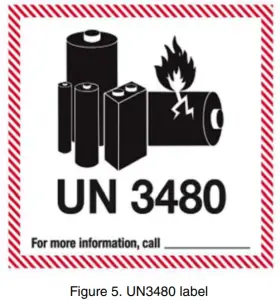
Toll Free: +1 (800) 628-3119Phone: +1 (301) 263-7321Support: https://terraview.com/contact/Web: www.terraview.comPart Number: 50000067-T3IMD, Rev. BRevised: December 18, 2020
TerraView25020 Avenue Stanford, #10Valencia, CA 91355 USAToll Free: +1 (800) 628-3119Phone: +1 (301) 263-7321Support: https://terraview.com/contact/Web: www.terraview.com
Trademark StatementThe term RangePro is a registered trademark of TerraView 360, Inc. (TerraView). All other trademarks presented in this document are the property of their respective owners.
Copyright © 2020, TerraView 360, Inc., all rights reserved.TerraView, the TerraView Logo, RangePro X8, RangePro X8P, and this document are copyrighted by TerraView 360, Inc. All rights reserved.


References
Customer Support – TerraView Facebook Twitter Instagram LinkedIn YouTube
Meet the RangePro X8 by TerraView | The First Drone Designed for Industrial Applications Facebook Twitter Instagram LinkedIn YouTube
Contact – TerraView Facebook Twitter Instagram LinkedIn YouTube
Customer Support – TerraView Facebook Twitter Instagram LinkedIn YouTube
FAADroneZone
Contact Us | View Smart Windows
FAADroneZone
Contact – TerraView Facebook Twitter Instagram LinkedIn YouTube
[xyz-ips snippet=”download-snippet”]

